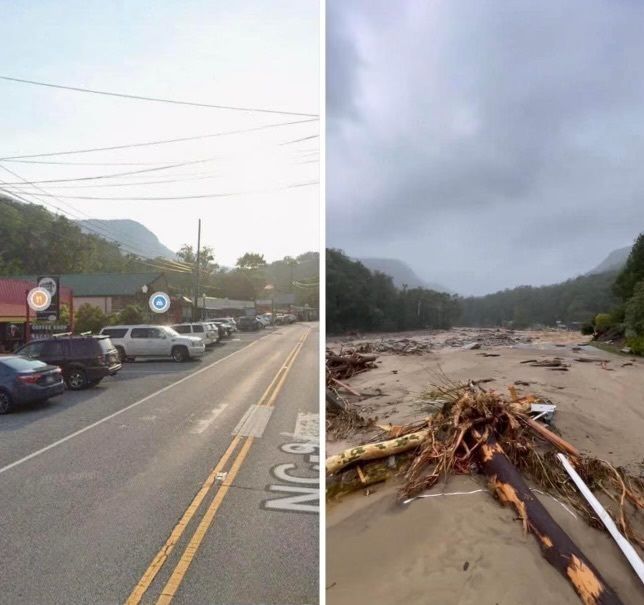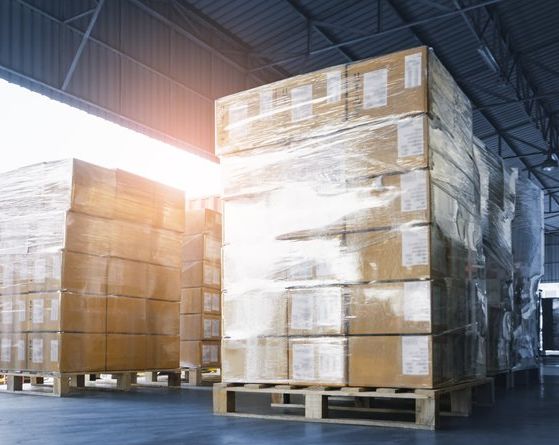Shipping Update: Hurricane Helene's Impact on Carrier Operations
Hurricane Helene: Infrastructure Devastation and Recovery Challenges
Hurricane Helene just swept through Florida's Big Bend region, wreaking havoc across the southeastern United States. The Category 4 hurricane, which struck land on September 26, brought destructive winds, torrential rains, and severe flooding. Florida, Georgia, and the Carolinas faced widespread power outages, submerged roadways that are currently closed, and billions in property damage. Potential economic losses, according to Bloomberg, from the storm are estimated at over $100 billion, businesses, carriers and relief organizations are bracing for a prolonged recovery period.
This natural disaster not only disrupted daily life but also severely impacted vital industries, particularly trucking. Helene's landfall coincided with the busy freight season, making it a significant challenge for companies dependent on LTL and FTL transportation.
Transportation Update: Hurricane Helene's Impact on Carrier Operations
In the wake of Hurricane Helene, several major regions have reported transportation shutdowns. We are being advised by our motor carriers, the following areas are currently CLOSED with no pickup or delivery services available:
- Florida: Monticello, Tallahassee
- Georgia: Augusta, Columbus, Hazlehurst, Macon, Savannah, Tifton, Valdosta
- North Carolina: Asheville
- South Carolina: Greenville
As storm recovery progresses, TLI will continue to monitor carrier statuses closely. If you have an urgent shipment, Translogistics is happy to help. Reach out, and we'll track your delivery to ensure it reaches its destination safely.
The storm’s damage and ongoing recovery efforts are causing transit delays, especially in these affected areas. We will continue to monitor the situation closely. For urgent shipments, contact Translogistics to ensure your important delivery is tracked and supported during this time.

Shipping Update: Hurricane Helene's Impact on Carrier Operations
Over 400 roads in North Carolina were closed due to flooding and washouts. Washed-out bridges not only blocked transport routes but also disrupted essential services like water, gas, and communication lines, leaving recovery efforts severely hindered. Many gas stations in the affected areas were forced to close, either due to lack of electricity or fuel shortages caused by disrupted supply chains.
With tanker trucks unable to reach their destinations, diesel shortages spread across Florida and neighboring states, crippling truckers' ability to operate efficiently. Many communities found themselves isolated, with downed cell phone towers preventing people from contacting loved ones. Atlanta recorded a staggering 11.2 inches of rainfall within 48 hours, breaking a 138-year-old record.

Widespread Power Outages and Flooding Emergencies
The most severely affected areas, including Florida, Georgia, and the Carolinas, saw widespread flooding. In North Carolina's Jeter Mountain, over 32 inches of rain fell, contributing to the catastrophic conditions across the region. More than 2.5 million people across eight states faced power outages, with Georgia and Florida enduring some of the heaviest damages. As the storm moved northward, it unleashed additional flooding across Tennessee and Virginia, triggering numerous water rescues.
North Carolina & Tennessee Update
Floodwaters from Helene left Asheville and other parts of North Carolina and Tennessee isolated. Buncombe County officials managed to reopen Interstate 26 between Asheville and South Carolina, but many roads remained impassable. Power outages and communication blackouts only added to the challenges. Damaged roads in southern Appalachia cut off access to major cities, leaving worried residents disconnected from loved ones. One notable incident involved dozens of patients and staff being airlifted from the rooftop of Unicoi County Hospital in Tennessee.
Florida Update
More than 2.5 million people across eight states faced power outages, with Georgia and Florida enduring some of the heaviest damages.
Ahead of Helene’s landfall, Pinellas and Hillsborough counties in Florida issued mandatory evacuation orders for coastal “Zone A” regions like Treasure Island and St. Petersburg Beach. Tampa saw entire neighborhoods cut off by the storm, while emergency crews rescued 70 people from floodwaters in St. Petersburg.
Supply Chain Challenges in Fuel and Logistics
Hurricane Helene caused severe fuel shortages that have hit the trucking industry hard. Winds and debris blocked key routes, leaving thousands of trucks stranded as hundreds of roads remain closed. Many gas stations shut down due to power outages and disrupted supply chains, making it impossible for fuel trucks to deliver diesel, further crippling truck operations.
The storm's impact worsened due to its timing during an
improving freight market, making it even more challenging for companies relying on trucking. In the aftermath, emergency crews carried out thousands of water rescues, yet tragically the storm caused
52 fatalities.
Track my Shipment
As recovery efforts continue, businesses and supply chains across the Southeast face significant delays. Be sure to add Translogistics' blog to your favorites list, and stay informed.
If you have ViewPoint TMS access, you can track your shipments in real-time and stay updated with the latest status. Our platform allows you to generate reports that provide detailed supply chain analytics. If you need any support or help setting up, don't hesitate to reach out—Translogistics is here to provide whatever you need!
TLI Insights
Get the latest logistics insights and tips from Translogistics’ award-winning team. Stay ahead in transportation planning.
Questions? Email us at marketing@tli.email



